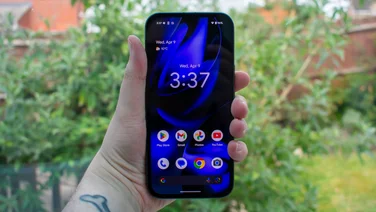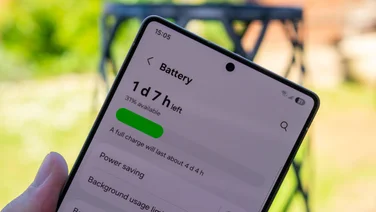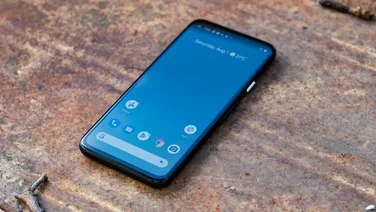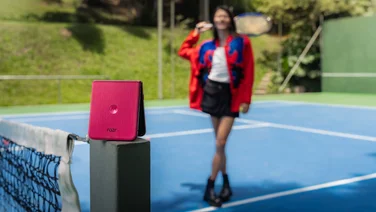To help us provide you with free impartial advice, we may earn a commission if you buy through links on our site. Learn more
- Huawei P40 Pro review: What you need to know
- Huawei P40 Pro review: Price and competition
- Huawei P40 Pro review: What about the P40 Pro Plus?
- Huawei P40 Pro review: Design
- Huawei P40 Pro review: Display
- Huawei P40 Pro review: Performance and battery life
- Huawei P40 Pro review: Camera
- Huawei P40 Pro review: A life without Google











- Gorgeous design
- Silky-smooth 90Hz screen
- Camera array is exceptional
- No Google apps is deal-breaker for many
- Price is hard to justify
Huawei’s tumultuous relationship with the US government shows no signs of improving. Its latest line of high-priced smartphones, the Huawei P40 series, represent a number of firsts for the company, but since they’re launching without Google’s core suite of Android apps (amongst other software restrictions), they’re just as unappealing as the Huawei Mate 30 was last year.
READ NEXT: The best smartphones
However, I’ve been using the Huawei P40 Pro for a little while now and I’m increasingly impressed with the hardware that Huawei is bringing to the table this year. Unfortunately, though, I still have some serious reservations about the software offering.
Huawei P40 Pro review: What you need to know
So, the Huawei P40 Pro runs Android, but it doesn’t come with Google’s widely-used applications pre-installed. In this case, the most important question you have to ask yourself before potentially buying one is whether or not you think you can live without Maps, Gmail, YouTube and Chrome.











Ultimately, that’s a decision you’re going to have to make for yourself – if you use those apps on a regular basis then you might want to look elsewhere. But if you aren’t fond of Google’s apps, then you’re off to a great start: the Huawei P40 Pro is a marvellously well-rounded flagship.
It has a 6.58in edge-to-edge display with a 90Hz refresh rate and a Leica-branded quadruple rear camera with up to 50x hybrid zoom. Huawei’s fastest homebrew processor, the Kirin 990, powers the phone, along with 8GB of RAM and 256GB of storage – which can be expanded with one of Huawei’s Nano Memory cards. It’s also IP68-rated for dust and water protection, has a 4,200mAh battery and comes with 5G as standard.
Huawei P40 Pro review: Price and competition
Naturally, with hardware like that, Huawei’s latest Google-less flagship still costs a pretty penny. Unlike Honor – which also recently launched its first phone without Google apps – the P40 Pro is priced far out of reach of most customers’ wallets. You can pick one up for £900 SIM-free, with contracts starting at around £54/mth.
At such a high price, the P40 Pro’s limited software options are immediately less forgivable, but the regular P40, which costs £200 less, is perhaps a little more forgiving (costing £700 SIM-free or £31/mth). The caveat, however, is that you have to sacrifice the wraparound screen, quadruple-camera array, IP68-rated protection and a bunch of other features.
Where does the P40 Pro stack up against its fully-supported Android alternatives? Well, the recently-launched Samsung Galaxy S20 Plus costs £100 more, so there’s a slight saving in that regard. Apple’s iOS alternative, the iPhone 11 Pro, costs even more at a whopping £1,049.
Huawei P40 Pro review: What about the P40 Pro Plus?
Of course, there’s also the difficult choice of whether or not to pay extra for the P40 Pro Plus. For an extra £400 (starting at £1,300), the P40 Pro Plus is much the same as the Pro, although it has a new ceramic design finish, extra storage and a slightly tweaked camera arrangement. This includes a massive 10x optical zoom sensor, which is the biggest we’ve seen on any smartphone to date.
Predictably, captured snaps are nothing short of exceptional. Being able to zoom that far into the frame without any noticeable loss in detail is really a sight to behold, even if the practical applications are a little niche. It’s good for the avid birdwatcher, trainspotter or aircraft enthusiast, but I can’t see many other uses for it. The question you have to ask yourself is whether you want to spend even more on top of an already expensive purchase.
Huawei P40 Pro review: Design
It’s not all about the operating system, and I figure it might be best to talk about everything else before I rattle on about the potential pitfalls of picking up a phone that only runs the open-source version of Android. You won’t be surprised to hear that the P40 Pro is everything we’ve come to expect from Huawei up until this point – it’s the sort of phone that sits in the upper echelons of the flagship tier, and you can tell as such just by looking at it.











Surprised? You absolutely shouldn’t be. Huawei has often done a splendid job with the look and feel of its premium-priced handsets, and the P40 Pro looks as swish as ever with its diamond-cut edges, smooth lines and generously sized wraparound screen. The plain ‘Black’ and ‘Ice White’ colours are nice enough, but the multi-colour shimmering options are genuinely heart-stopping. Our ‘Deep Sea Blue’ review model, in particular, gives off a dazzling oil-slick effect whenever the light bounces off the rear panel.
Whichever colour you opt for, though, the rest of the design is the same. I do quite like the rectangular camera unit on the back – squeezing in a total of four cameras – which blends nicely into the rest of the handset with its ramped sides. Huawei says this effect is supposed to look like the profile of a volcano, and I’m inclined to agree.
Huawei P40 Pro review: Display
Next up is the P40 Pro’s new ‘Overflow’ display. Huawei calls this a “quad-curve” design, because the 6.58in screen not only wraps around the sides of the phone, but also the top and bottom. The curvature isn’t quite as dramatic as the Mate 30 Pro’s 88-degrees and I don’t see there being any tangible benefits when it comes to usability, but it’s a pleasant design decision nonetheless.











One word of caution before we continue, however. Huawei’s marketing images suggest that the screen completely fills the front of the phone – aside from the left-mounted hole-punch cameras – but that isn’t really the case when you see it in person.
You’ll immediately notice the four chunky corner bezels when you pull the phone out of the box. Likewise, whenever I launched the on-screen keyboard, the edges were cut off. It’s worth bearing in mind that this is running early software, however, so I expect these kinks to be ironed out before release.
This is also Huawei’s first smartphone with a high refresh rate screen. Like last year’s OnePlus 7T, the P40 Pro is fitted with a 90Hz display, with an unusual long-tall resolution of 2,640 x 1,200. Faster refresh screens have started trickling in across the industry in recent months – I wouldn’t be surprised if this year’s iPhone has one – and the P40 Pro’s OLED panel is an absolute joy to swipe, tap and scroll on.
As for colour performance, the P40 Pro gives you two modes to choose from: Normal and Vivid. In Normal mode, you get a more muted set of colours and 96% of the sRGB colour space. Vivid mode is better suited for watching movies or TV and covers 84% of the DCI-P3 colour space.











It’s bright, too, with highlights peaking at around 569cd/m2 in auto-brightness mode. With HDR10+ support as well, Netflix and Amazon Prime content look terrific, although it’s not quite a match for the iPhone 11 Pro’s display in the vibrancy stakes.
Huawei P40 Pro review: Performance and battery life
Naturally, the P40 Pro is powered by Huawei’s fastest-ever mobile chipset, the Kirin 990. This is a new eight-core chip that’s built using a 7nm fabrication process – which we first saw in the Huawei Mate 30 Pro – with the cores split into three groups: two performance-based Cortex-A76 cores running at 2.86GHz, a further two mid-power cores running at 2.36GHz; and four Cortex-A55 based cores running at 1.95GHz.
How do these numbers translate to real-world performance? Well, in testing, I found the Kirin 990 to be roughly 18% faster in multi-core processing when compared with the previous generation Kirin 980 (which powered the P30 Pro). Huawei’s own app store might indeed be limited at the time of writing, but the P40 Pro will be able to run anything you throw at it without breaking a sweat.


I was worried that the P40 Pro’s battery life might suffer as a result of that 90Hz screen but in the end that, too, turned out to be excellent. At the phone’s native screen resolution with the high refresh setting switched on, the P40 Pro lasted 21hrs 36mins before needing to recharge. That’s pretty darned good by any measure, and a better result than the P30 Pro and Mate 30 Pro – both of which had a regular 60Hz screen.

Huawei P40 Pro review: Camera
Before we discuss the haves and have-nots in terms of the software package, it’s worth paying close attention to the real star feature: the quadruple Leica camera array. To start with, the primary camera is a 50-megapixel (f/1.9) affair, which sits next to a 12-megapixel (f/3.4) 5x telephoto zoom lens. Both are optically-stabilised and employ the less commonly used RYYB filter, replacing the green elements of the filter with yellow.
Huawei calls this “SuperSpectrum” imaging, and we first saw this shooting technique in last year’s P30 Pro. Theoretically – according to Huawei – images should look better in low-light when compared with pictures captured using a camera unit with an RGB Bayer filter. The two cameras are accompanied by an extra 40-megapixel (f/1.8) wide-angle lens and a ToF sensor for more effective blurred background portraits.











Owners of last year’s Huawei P30 Pro might struggle to find the differences between the two phones in the camera department. Aside from a few changes in megapixel count and aperture, this is pretty much an identical arrangement to its predecessor, but that’s not necessarily a bad thing.
Yet again, the image quality delivered by Huawei’s suite of cameras is sublime. The photos I’ve taken over the course of a week or so – on my government-mandated daily walks – have generally been sharper and more detail-packed than the same images taken using both the Galaxy S20 and Pixel 4. Huawei has even managed to fix the aggressive auto exposure, which has plagued Huawei’s handsets for as long as I can remember.
In low-light conditions, the Huawei doesn’t take quite as big of a leap forward. To be clear, contrast is excellent and it did well at softening highlights, but generally, I much preferred pictures from the iPhone 11. Colours were more naturalistic, and low-light images didn’t look quite as overly warm as on the P40 Pro. The portrait modes also looked a bit too smooth on the P40 Pro for my liking – I suspect Huawei was still applying face-smoothing beauty effects, even after I dialled the setting down to zero.
The good news is that Huawei has finally added 4K video recording at 60fps. As with previous Huawei phones, both OIS and EIS are enabled by default in video for super-stable looking shots (Huawei calls this AIS) and the footage looks very good indeed. The only thing I don’t like is that it’s not easy to switch between zoom levels on the fly – there’s a lot of trial and error with the zoom slider while recording.
Huawei P40 Pro review: A life without Google
Finally, let’s talk about software, or lack thereof in Huawei’s case. The Huawei P40 Pro is using Android 10 as its base operating system, but due to the US trade ban on Huawei, and Google’s subsequent restrictions on what companies it can work with, this is only the open-source version of the OS.
This means that Google’s first-party applications on the Play Store (the service isn’t available) such as Maps and YouTube can’t be downloaded and aren’t preinstalled. As we saw with last year’s Mate 30 Pro – which is the first phone we reviewed with this problem – there is a way you can install these applications via unofficial sources, but this is ultimately a very risky and confusing process for those that aren’t in the know.











Huawei insists that this restriction won’t get in the way. The App Gallery – Huawei’s version of the Play Store – has its own app alternatives after all. However, scroll through the list of apps that are available for download in Europe and it’s clear that this list is sorely lacking popular applications that are widely used in western markets. TikTok is on there, but you certainly won’t find Facebook, Twitter, Instagram or the like.
Huawei also says that you can simply use these apps in the phone’s web browser, but anyone that’s ever used YouTube via this method knows that this is a hellish experience. So, that workaround is basically a write-off, too. You can also use Huawei’s ‘Phone Clone’ app when you first set up the phone, which transfers apps from your old device to your new one, but it still doesn’t move everything – and some of the transferred apps will fail to open.
I’ve been told that Huawei is working with app developers in order to copy application launchers over to Huawei’s storefront; I wouldn’t expect this transfer process to be too time-consuming for your average developer when you consider that Huawei’s phones are still running the same core OS. Perhaps the state of the App Gallery will have changed dramatically in 12 month’s time? Who knows.
Huawei P40 Pro review: Verdict
What I do know is that buying the Huawei P40 Pro is a risky venture. Launching a high-priced flagship phone without access to popular apps isn’t an appealing move, and if the frosty reception to last year’s Mate 30 Pro launch offers any indication, I’m struggling to see any scenario where Huawei might benefit.
But of course, I remain entirely sympathetic. In a global marketplace, it’s entirely unfair to single out a foreign company and heavily impose restrictions on them. Huawei – and sub-brand Honor – are making the best of a bad situation, and I applaud them both for their efforts.
Alas, sympathy isn’t a big enough reason to buy a phone. I would like to be optimistic – the Huawei P40 Pro could very well stand up on its many merits – but as it stands I can’t see many of these flying off the shelves, especially as Huawei expects you to pay top dollar for one.
| Huawei P40 Pro specifications | |
|---|---|
| Processor | Octa-core HiSilicon Kirin 990 5G (2×2.86GHz, 2×2.36GHz, 4×1.95GHz) |
| RAM | 8GB |
| Screen size | 6.58in |
| Screen resolution | 2,640 x 1,200 |
| Pixel density | 441ppi |
| Screen type | OLED |
| Front camera | 32MP, ToF |
| Rear camera | 50MP, 12MP (5x zoom), 40MP (wide), ToF |
| Flash | Dual LED |
| Dust and water resistance | IP68 |
| 3.5mm headphone jack | No |
| Wireless charging | Yes |
| USB connection type | USB-C |
| Storage options | 128GB, 256GB, 512GB |
| Memory card slot (supplied) | Nano SD |
| Wi-Fi | 802.11ax |
| Bluetooth | 5.1 |
| NFC | Yes |
| Cellular data | 5G |
| Dual SIM | Yes |
| Dimensions (WDH) | 158 x 73 x 9mm |
| Weight | 209g |
| Operating system | Android 10 (EMUI 10.1) |
| Battery size | 4,200mAh |
![HUAWEI P40 Pro 256 GB 6.58 Inch Smartphone Bundle with PU Case, Kirin 990 5G, 50 MP Ultra Vision Leica Quad Camera, 8 GB RAM, 40W SuperCharge, IP68, SIM-Free Android Mobile Phone, Dual SIM, Black [Amazon Exclusive]](https://m.media-amazon.com/images/I/51KkBUyppZL._SL160_.jpg)





